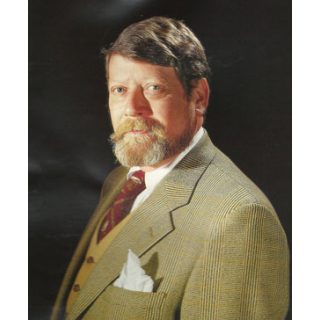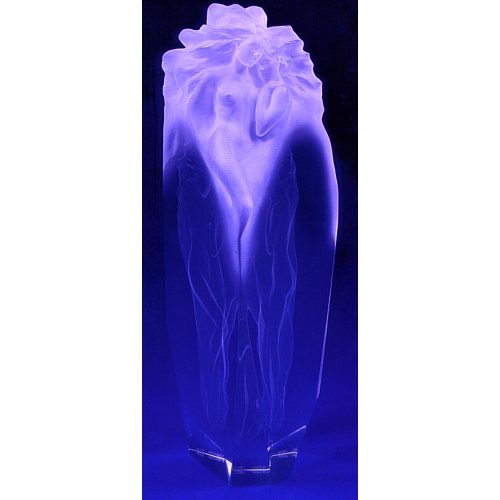
Atlanta, Georgia United States – 1943 -1999
“I believe that art has a moral responsibility, that it must pursue something higher than itself. Art must be a part of life. It must exist in the domain of the common man. It must be an enriching, ennobling, and vital partner in the public pursuit of civilization. It should be a majestic presence in everyday life just as it was in the past.”
Having been born in Atlanta with the traditions of Southern country life instilled in him, Frederick Hart chose to spend his life in South Carolina. He named his 135 acres estate after his late sister, Chesley. He used to host gatherings of “Centerists” (A group of artists, poets, philosophers, and other who share his vision in exchanging ideas)
His lifestyle was a far cry from the young, aspiring artist who applied for a job at the Washington National Cathedral in 1967 to learn the skill of stone carving. Hart recalls, “The Cathedral became a magical place for me, a place outside of this century. The wonderful Italian stone carvers who worked there were the last of a generation, a link back to the major American architectural works of the early 1900’s, to buildings like the Supreme Court, The Federal Triangle, and Grand Central Station, as well as to the great American sculptors Augustus Saint-Gaudens and Daniel Chester French.”
Comments master carver Vincent Palumbo, who worked with Hart for almost a decade, ‘Rick is one of the greatest sculptors of classic sculpture we have today or are going to have in the future. You can see the expressions of these human bodies, the details he puts into them. I felt like I was working on a live person coming out of the stone.”
In addition to Ex Nihilo, The Creation Sculptures include The Creation of Day, The Creation of Night, Adam, St. Peter, and St. Paul. The statue of Three Soldiers which he created for the Vietnam Veterans Memorial in the nation’s capitol has in Hart’s words, “a wholly unnerving, enigmatic, existential quality which I think is very appropriate for the Vietnam War.”
Cast in bronze, this historic sculpture – now one of America’s most famous sculptures – was dedicated in November, 1984, at a major ceremony attended by President Ronald Reagan and more than 100,000 veterans. In a century marked by nihilism, abstraction, and deconstruction, Hart exemplifies a returning tide to aesthetic and moral agendas embodied in the great ages of art in the past.
In 1985 President Reagan appointed Hart to a five-year term on the Commission of Fine Arts, a seven-member committee that advises the U.S. Government on matters pertaining the arts, and guides the architectural development of the nation’s capital. In 1987 Hart received the Henry Hering Award from the National Sculpture Society for sculpture in an architectural setting, shared with architect Philip Frohman (National Cathedral work).
In 1988 he was the recipient of the quadrennial Presidential Design Excellence Award (Vietnam Memorial work).Hart has used his celebrity to inveigh against the decline of moral and aesthetic standards in contemporary art, and to propound his alternative vision for a “great rebirth of art.” That rebirth must begin, Hart says, by rediscovering and renewing the “discarded axioms” and forgotten standards of past art – such as that “ancient trinity of truth, beauty, and goodness,” and the idea of art as “service to values and ideals it holds in greater esteem than art itself.”
In 1993 Frederick Hart received an honorary degree of Doctor of Fine Arts from the University of South Carolina for his “ability to create art that uplifts the human spirit, his commitment to the ideal that art must renew its moral authority by rededicating itself to life, his skill in creating works that compel attention as they embrace the concerns of mankind, and his contributions to the rich cultural heritage of our nation.”
On January 24, 1996 a white Italian marble state of Richard B. Russell, Jr. was unveiled in the rotunda of the Russell Senate Office Building. The new statue created by Hart over a two year period honors the distinguished senator from Georgia who served from 1933 until his death in 1971.
Hart’s latest contribution to our nation’s capital stands as the focal piece in the rotunda entrance of the building which was named in honor of Senator Russell in 1972.
The artistic and historic importance of The Creation Sculptures, Three Soldiers, and The Cross of the Millennium, a work in clear acrylic using striking and unique techniques developed and patented by Hart, are featured in the book, “Masters of American Sculpture: The Figurative Tradition from the American Renaissance to the Millennium”. Author Dr. Donald Martin Reynolds is one of the foremost authorities on sculpture in the United States.
Comments J. Carter Brown, Director Emeritus of the National Gallery of Art in Washington, D.C., “It is breathtaking to see an artist with the technical abilities and devotion to craft of Frederick Hart combine these gifts with an ability to go to the brink with them, but somehow to keep the inner, emotional, intellectual, and spiritual force of the work dominant.”
Hart’s more intimate clear acrylic sculptures (he pioneered the use of acrylics in figurative sculpture, a technique which he calls “sculpting with light”) are inventive and revolutionary; physical and sensuous, yet spiritual; direct, yet spiritual; direct, yet graceful and subtle. His figures are classic while his medium of clear acrylic is most modern and technologically advanced.
In the tradition of the great Renaissance and Baroque masters who have presented works to the Pope for over 1000 years, Hart met Pope John Paul II in May, 1997 at a private ceremony in the Papal study in Rome. In celebration of the coming 2000 year anniversary of Christ’s birth and to honor the 50 years of his priesthood Hart presented The Cross of the Millennium to Pope John Paul II who proclaimed, “This work represents a profound theological statement for our day.”
Frederick Hart worked in stone, bronze, marble and clear acrylic. The body of work he has created over more than twenty years heralds a new age for contemporary art, “one in which figurative beauty, embodiment of values, and spiritual enlightenment are the ways in which we measure significance.”
FREDERICK HART
Showing all 5 results




